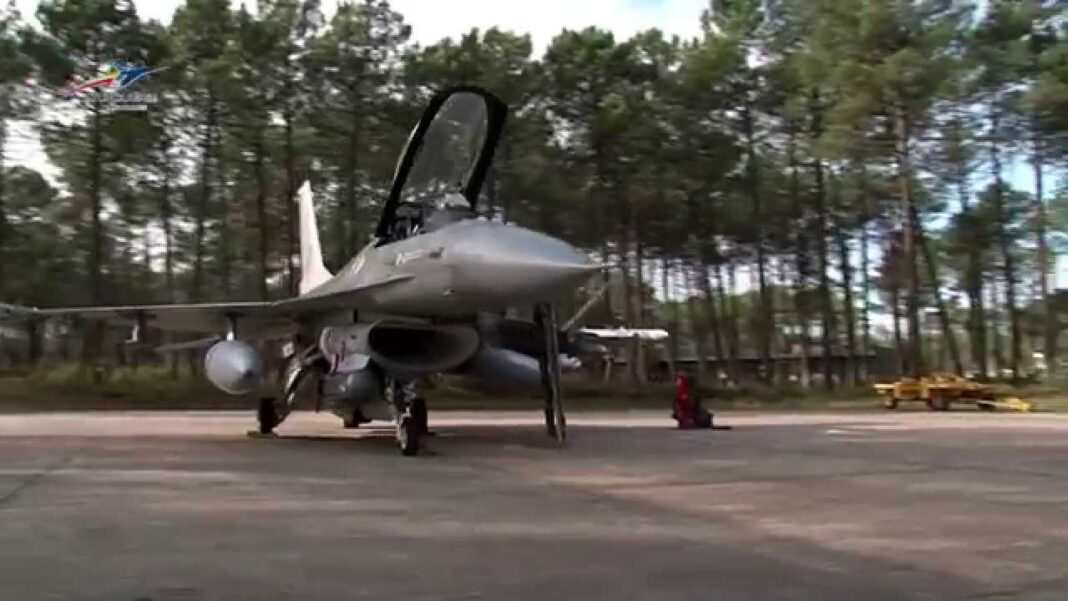Four Portuguese F-16 fighter jets have arrived at Ämari Air Base in Estonia, taking over NATO’s air policing duties in the Baltic region.
Portugal Takes Over NATO Mission in the Baltics
The Portuguese Air Force is replacing a detachment of Dutch F-35 fighter jets, which had been stationed there for months. This transition marks a significant change in the mission, as Portugal now leads air defense efforts in Estonia, Latvia, and Lithuania for the next four months.
Portugal’s deployment includes around 90 personnel, consisting of pilots, maintenance crews, and support staff. While this is Portugal’s first time leading the mission in Estonia, it has previously contributed to NATO air policing in Lithuania. The operation ensures that NATO members without their own fighter jets still have air protection, strengthening the security of the alliance’s eastern borders.
The Dutch F-35 jets had been patrolling the skies over the Baltics since the start of their rotation. Their presence was part of NATO’s effort to maintain a strong defensive stance, particularly in a region that has seen increased airspace activity. The Dutch mission also included a major exercise that allowed Estonian military personnel to gain experience in maintaining advanced fighter jets like the F-35.
Why Portugal’s Controversial Exit from the F-35 Deal Raises NATO Concerns
From Stealth Fighters to Proven Workhorses
The transition from Dutch F-35s to Portuguese F-16s brings a shift in technology and capabilities. The F-35 is a fifth-generation stealth fighter equipped with advanced sensors and radar-evading technology, making it one of the most modern aircraft in NATO’s fleet. These jets can share real-time data with other units, improving coordination in complex operations.
In contrast, Portugal’s F-16 jets belong to an older but highly reliable generation of fighter aircraft. Originally introduced in the 1970s, the F-16 has undergone numerous upgrades to keep it competitive. Portugal’s fleet has been modernized with improved avionics and weapons systems, ensuring that the aircraft can effectively respond to airspace violations.
While the F-16 does not have the stealth capabilities of the F-35, it is known for its speed, agility, and ability to react quickly in emergency situations. For air policing missions, rapid response is essential, as NATO forces must be able to intercept and escort unidentified aircraft that enter allied airspace.
NATO’s F-16 Gamble Strengthens Ukraine, Provoking Russia
The shift from F-35s to F-16s does not change NATO’s overall mission in the region. The alliance remains committed to protecting its members, and the transition has been carefully planned to ensure seamless coordination between outgoing and incoming forces.
Strengthening NATO’s Baltic Defense
NATO’s air policing mission in the Baltics has been ongoing since 2004, when Estonia, Latvia, and Lithuania joined the alliance. Because these countries do not have their own fighter jets, NATO allies take turns deploying aircraft to patrol their airspace. The goal is to deter potential airspace violations and quickly respond to any unauthorized activity.
The importance of this mission increased significantly after 2014, following geopolitical tensions in the region. NATO has since expanded its presence in Eastern Europe, enhancing security measures to reassure its member states. Regular rotations of different NATO forces ensure that the Baltic region remains under constant protection.
Estonia’s Ämari Air Base has played a key role in this effort. The base recently underwent a major renovation, including upgrades to its runway, allowing it to host a wider range of aircraft. The Dutch F-35s were the first NATO jets to operate from the improved facility, and now Portugal’s F-16s will continue that mission.
Denmark’s Defense Chief Slams F-35 Deal: ‘We Should Avoid American Weapons’
Throughout their deployment, Portuguese pilots will remain on high alert, ready to respond to any airspace violations. While specific threats are not always publicly detailed, the Baltic region has seen periodic incidents involving unidentified aircraft, making constant vigilance necessary. The presence of NATO jets serves as a deterrent, ensuring that the airspace of Estonia, Latvia, and Lithuania remains secure.
As the Portuguese Air Force takes charge of the mission, it continues a long-standing NATO tradition of shared defense. The rotation demonstrates the alliance’s commitment to its eastern members, reinforcing security through cooperation and readiness.

